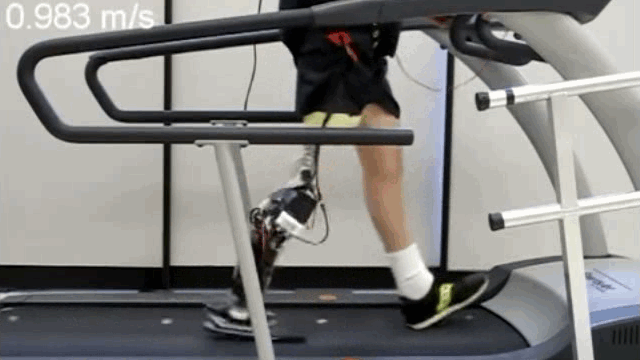Prosthetics are lighter and more flexible than in the past, but fail to mimic human muscle power. Powered prosthesis motors generate force, but cannot respond with stability to disturbances or changing terrain.
Robert Gregg and colleagues at the University of Texas have applied robot control theory to allow powered prosthetics to dynamically respond to a wearer’s environment. This has enabled wearers of a robotic leg to walk on a moving treadmill at similar speeds to able-bodied people.
Gregg said that “the gait cycle is a complicated phenomenon with lots of joints and muscles working together. We used advanced mathematical theorems to simplify the entire gait cycle down to one variable. If you measure that variable, you know exactly where you are in the gait cycle and exactly what you should be doing.”
In a recent study, algorithms with sensors measured the center of pressure on a powered prosthesis. Inputted with a user’s height, weight and dimension of the residual thigh, the prosthesis was configured for each subject in 15 minutes. Subjects walked on the ground, and on a treadmill, at increasing speeds. Their walking speeds were greater than 1 meter per second throughout the study. Typical able-bodied walking speed is 1.3 meters per second. Participants also reported less energy exertion than with traditional prostheses.
